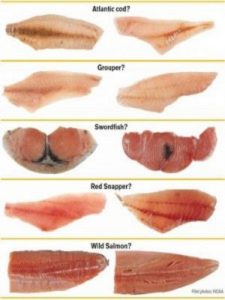Not only does Canada continue to have a problem with fish mislabelling, but that problem persists throughout the supply chain, according to a first-ever study by University of Guelph researchers.
 U of G researchers found 32 per cent of fish were mislabelled and the number of incorrectly identified samples became compounded as the samples moved through the food system.
U of G researchers found 32 per cent of fish were mislabelled and the number of incorrectly identified samples became compounded as the samples moved through the food system.
“We’ve been doing seafood fraud studies for a decade,” said Prof. Robert Hanner, lead author and associate director for the Canadian Barcode of Life Network. “We know there are problems. But this is the first study to move beyond that and look at where the problems are happening throughout the food supply chain.”
The findings reveal that mislabelling happens before fish are imported into Canada, as well as throughout the supply chain, Hanner added.
“It seems it’s not isolated to foreign markets, but it’s also happening at home. The Canadian Food Inspection Agency (CFIA) has partnered with us to actively find solutions to this persistent problem,” said Hanner.
Published recently in the journal Food Research International, the study was conducted in collaboration with the Canadian Food Inspection Agency (CFIA).
Hanner is the associate Director for the Canadian Barcode of Life Network, headquartered at the Biodiversity Institute of Ontario, University of Guelph.
U of G researchers examined 203 samples from 12 key targeted species collected from various importers, processing plants and retailers in Ontario. Of the samples, 141 (69.5 per cent) were from retailers, 51 (25 per cent) from importers and 11 (5.5 per cent) from processing plants.
Researchers identified the samples using DNA barcoding. Developed at U of G, DNA barcoding allows scientists to determine species of organisms using a short, standardized region of genetic material.
The findings revealed 32 per cent of the samples overall were mislabelled. The mislabelling rate was 17.6 per cent at the import stage, 27.3 per cent at processing plants and 38.1 per cent at retailers.


















